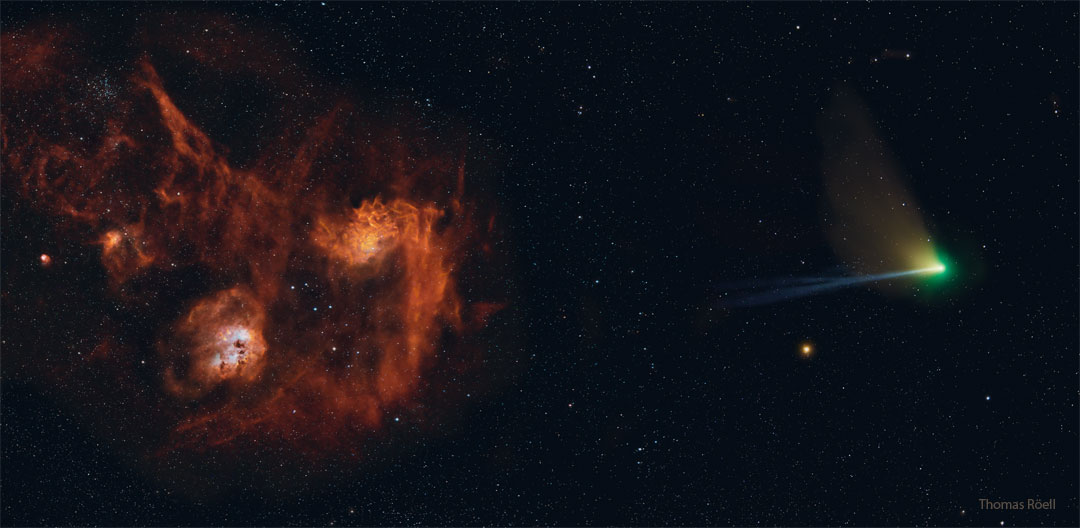2023年3月1日
The Flaming Star Nebula
Image Credit & Copyright: Thomas Röell
Explanation: Is star AE Aurigae on fire? No. Even though AE Aurigae is named the Flaming Star and the surrounding nebula IC 405 is named the Flaming Star Nebula, and even though the nebula appears to some like a swirling flame, there is no fire. Fire, typically defined as the rapid molecular acquisition of oxygen, happens only when sufficient oxygen is present and is not important in such high-energy, low-oxygen environments such as stars. The bright star AE Aurigae occurs near the center of the Flaming Star Nebula and is so hot it glows blue, emitting light so energetic it knocks electrons away from surrounding gas. When a proton recaptures an electron, light is emitted, as seen in the surrounding emission nebula. Captured here three weeks ago, the Flaming Star Nebula is visible near the composite image’s center, between the red Tadpole Nebula on the left and blue-tailed Comet ZTF on the right. The Flaming Star Nebula lies about 1,500 light years distant, spans about 5 light years, and is visible with a small telescope toward the constellation of the Charioteer (Auriga).
Tomorrow’s picture: disturbing galaxies
御夫AE星和火焰恒星云
图像提供与版权: Thomas Röell
说明: 御夫AE星着火了吗?并没有。虽然御夫AE星称为火焰恒星,周围的星云IC 405名为火焰恒星云(Flaming Star Nebula),此区对某些人来说形似涡状火焰,然而此处并没有火。常见的凡火是物质和氧剧烈结合所致,只有在氧够多的环境才会发生,是以在像恒星这种高能低氧的环境里,火无足轻重。位在火焰恒星云中心的明亮御夫AE星极为炽热,故星色泛蓝,而它所发出的辐射能量极高,能把周围物质的电子给撞飞出去。当质子再和电子复合时,就会发光,故其周围环拱着发射星云。在这幅摄于3星期前的组合图像里,中心附近为火焰恒星云,其左有泛红的蝌蚪星云,右侧则有曳着泛蓝彗尾的ZTF彗星。位在北天御夫座方向的火焰恒星云,离我们约1,500光年远,跨幅约有5光年,用小望远镜即可见。
明日的图片: disturbing galaxies







